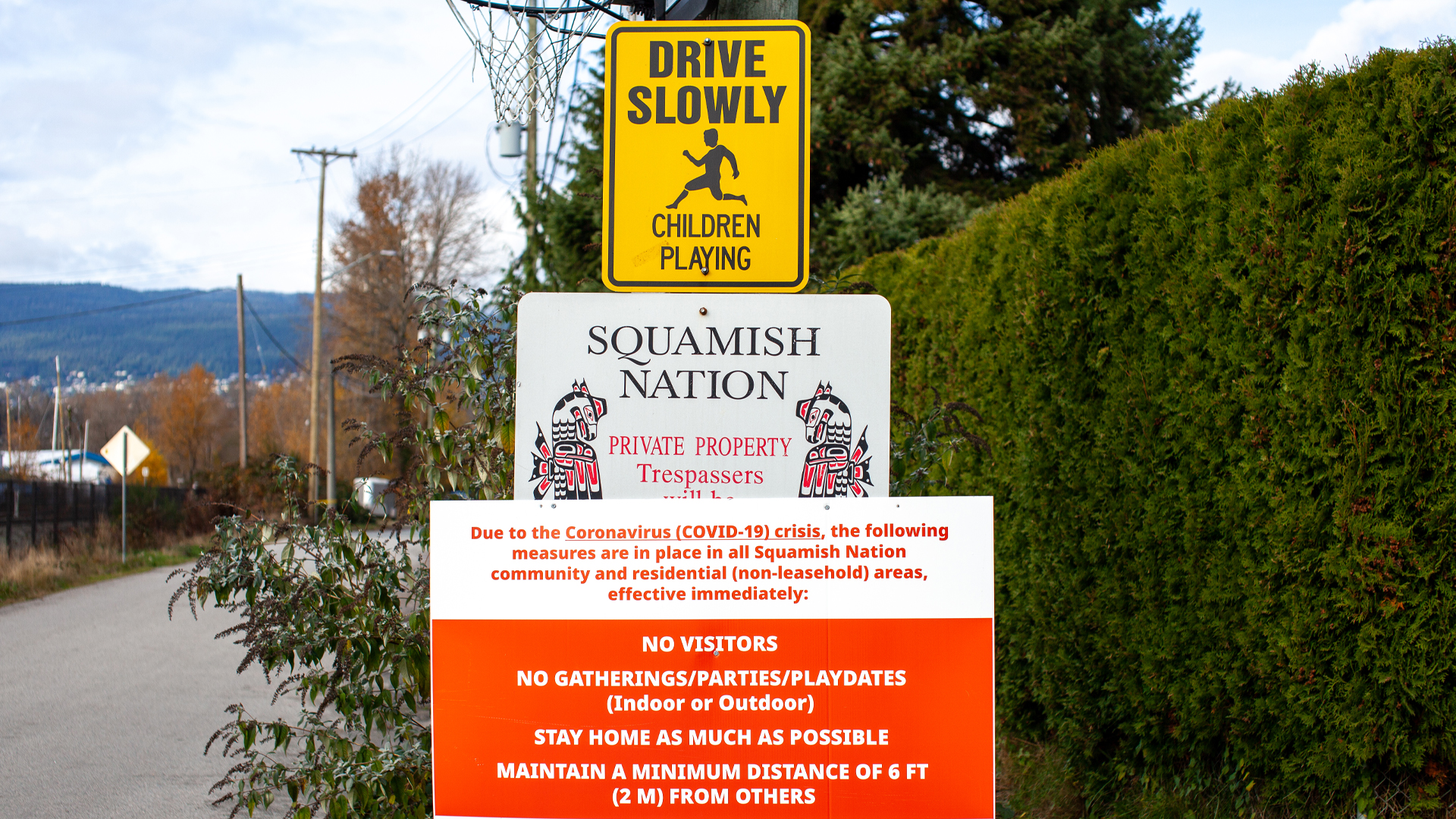
Version française disponible ici.
The fight against COVID-19 in First Nations communities had many successes. Vaccination rates were high – nearly 93 per cent of individuals aged 12+ years received a second dose and nearly 40 per cent received a third dose.
Federal ministers met daily to receive updates and to co-ordinate responses to address the impact of the pandemic on our communities. Many provinces and health authorities prioritized vaccine access for community members. First Nations organizations, doctors, nurses and leaders were involved in planning COVID-19 vaccine mobilization.
Most importantly, individuals stepped up, secured their vaccinations and followed public health orders. While some First Nations were significantly impacted by COVID-19, the outcome could have been much worse at a population level. Inadequate health-care services combined with crowded housing in remote and isolated communities posed serious risks for pandemic responses. But quick action, political will and community collaboration rose to meet the challenge.
While the overall response was effective, the pandemic also highlighted many vulnerabilities that if not addressed will continue to undermine the ability of First Nations governments to respond to future crises.
As is often the case, the challenges faced at the community level have enduring structural foundations. A lack of shared vision for the roles and responsibilities of First Nations in emergency response contributes to delayed information-sharing and inefficient deployment of resources. The non-inclusion of our governments can lead to siloed and segmented mobilization that may fail to achieve the co-ordinated outcomes that Canadians expect and First Nations deserve.
Underlying it all is the long-standing and often-unstated belief that First Nations shouldn’t have a seat at the table of Canadian federalism. We divide the legislative powers of our country into two boxes – federal and provincial. By leaving First Nations to the side, we fail to embrace the capacity and capabilities of the people who are best placed to respond to challenges at the community level. The unrealized potential of Canadian federalism to embrace First Nations governance can be seen every day in the poverty, marginalization and hardship experienced by our communities. We can make lives better for our communities, and combat the vulnerabilities shown during COVID if we embrace the rights and capacity of First Nations to lead, decide and deliver what our communities need to succeed.
At the start of the pandemic, some of these problems and vulnerabilities showed themselves quickly. Police services would not enforce First Nations laws and bylaws relating to public health, and at least one province contested the prioritization of First Nations for vaccine allocations while others closed their borders, preventing First Nations students from neighbouring provinces from attending school. Our communities also faced the compounding challenges of inadequate health services, limited housing to isolate individuals testing positive for COVID-19, and a lack of personal protective equipment.
While each of these challenges was unique, they were all made more complex and more difficult by the failure of this country to fully embrace First Nations self-determination.
Modern Canadian federalism is the contemporary implementation of the political compromises that were necessary for Confederation to take place in 1867. The balance of autonomy and centralization that was achieved through the division of powers between the federal and provincial governments continues to this day. However, like a puzzle with one piece left out, First Nations have never really found an independent home in the Canadian federal structure.
Quietly tucked away under the federal powers set out in the British North America Act of 1867 was the often ill-defined responsibility for “Indians, and Lands reserved for the Indians.” It entrusted the federal government with jurisdictional authority and a protective role in relation to First Nations populations. Even in areas where provinces would typically exercise power – such as education, health and child welfare – the allocation of jurisdictional responsibility over First Nations and our lands to the federal government sets us apart.
The practical impacts are significant. While occupying distinct jurisdictional space has helped First Nations maintain cohesion and identity, the numerous points of intersection between federal and provincial responsibilities have led to challenges not experienced by other Canadians.
First Nations children have been lost in games of jurisdictional ping-pong between the federal and provincial governments while they wait for medical services. Our governments have complained about a lack of notice and co-ordination in response to climate change-induced wildfires and floods. Many First Nations have watched economic development opportunities pass them by because the tools and certainty that make investments work off-reserve have not been available on reserve.
The lack of institutional clarity and shared views on the jurisdictional capacity of First Nations has placed many of us at a disadvantage and has cost the public purse a lot of money. To be ready for future challenges, and to build resilient institutions, we need to plot a path forward that brings First Nations into the heart of Canadian federalism. We have the tools; we just need the will and the focus to use them.
In some parts of Canada, historical treaties offer a commitment and vision that has never truly been implemented for the sharing of the land. In other parts of the country, aboriginal title provides a framework for tripartite collaboration that can strengthen the role of First Nations governments in resource management. Modern treaties have demonstrated that successful agreements can be reached that place our communities firmly in the driver’s seat for many areas of jurisdiction and control. Canada needs to move toward more First Nations control rather than less.
Success begins and ends with confidence – confidence in First Nations institutions, governance and peoples. With a little help from the Supreme Court of Canada, many First Nations have found their way to the bargaining table to articulate a new place – founded upon the recognition of our rights – within the Canadian federation. But the path to power remains long and slow.
The Recognition and Reconciliation of Rights Policy for treaty negotiations in British Columbia is a step in the right direction. The inherent rights of First Nations continue to exist to this day, and the reconciliation of pre-existing Indigenous sovereignty with assumed Crown sovereignty through treaties, agreements and other constructive arrangements remains largely outstanding.
We will face new and daunting challenges requiring the resilience and co-operation demonstrated during the fight against COVID-19. But Canada is a robust and creative country and one of our key strengths is our confidence in each other. Between then and now, we need to make First Nations empowerment our goal.
This article is part of the Resilient Institutions: Learning from Canada’s COVID-19 Pandemic special feature series.









